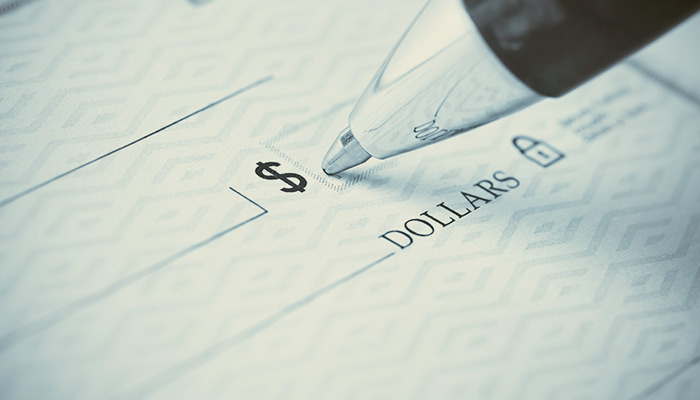
Planning to cash that check? You may want to pause and take a closer look.
According to the Association of Financial Professionals (AFP), checks are the payment option most vulnerable to fraud – impacting up to 63 percent of those responding to the AFP’s survey. So, what is check fraud, and how can you safeguard your business from fraudsters?
Simply put, check fraud is when a fraudster creates or alters a check in order to steal money from a business.
“There’s a lot of different ways check fraud can catch business owners by surprise,” shared Makayla Thurman, AVP Treasury Management Officer with First Merchants Bank. “A check contains all the information a fraudster needs. Then, they can use that stolen information to craft completely counterfeit checks, or they may remove or edit information on an existing check to better suit their needs.”
Businesses can be especially vulnerable to this type of fraud, Makayla explained, as checks are often used to pay vendors and complete payroll.
“So, if your checks are, say, sitting in a mailbox by the side of the road at any point in their journey, it’s really common for fraudsters to come along, open the mail, and take a picture of the check before placing it back in the mailbox,” she said. “A check plainly lists everything they need to create a counterfeit item – what the check looks like, the account number, the routing number, the account owner, and an address.”
Fraudsters may also steal a check outright – using whiteout to change the payee, add an extra zero to that amount, or endorse the item for themselves.
Luckily, there are ways to mitigate your risk of check fraud.
“The easiest way is to use a fraud monitoring tool like Positive Pay,” Makayla shared. “These tools allow you to approve checks before they clear – so you can ensure they’re being cleared for the correct amount and to the correct party.”
Find out how Positive Pay can help you prevent fraud.
Another simple way to foil fraudsters is to routinely check your business accounts.
“Check your account each day like you would a newspaper,” Makayla explained. “Get familiar with the amounts going in and out. And reconcile your accounts quickly – that way, if something seems off, it can be addressed sooner rather than later. A lot of times, fraudsters will do a test – try to cash a check for a smaller amount to see if it clears without any attention. If that goes through, they’ll try for a larger amount. If you’re checking your accounts daily, you have a better chance of catching that and halting it before it can really impact your wallet. The faster we know about fraud the better chance we have of recovering your funds.”
Makayla also urges business owners to become familiar with where they send checks.
“If it goes directly to a lockbox, that’s good, but if it’s going to, say, a smaller vendor, and is sitting in a mailbox by the roadside, or if it’s passing through a lot of hands and ends up sitting on someone’s desk for weeks, it might be time to have a conversation with that vendor and seeing if you can arrange something more secure,” she said.
And, if possible, start making digital payments whenever you can.
“Sending funds via an electronic method of payment such as ACH origination is a very secure method of payment because your routing and account number does not go with it,” Makayla shared. “We encourage our clients to purchase as many things electronically as possible rather than writing checks.”
Business owners should also be on the lookout in case they’re the recipient of a fraudulent check.
“Spot check your online bank, keep track of your receivables – double check the amounts on checks you receive as well as the payee,” Makayla said. “Take a good look at each item that’s clearing and make sure it’s clearing for the right person.”
And, an easy way to foil fraudsters is to ensure that all checks received and written have two sets of eyes on them.
“Have one person who’s writing the checks and one person using Positive Pay or checking the bank,” she advised. “This type of dual control is a great policy that can really help you catch fraud attempts early on.”
And when you do encounter fraud – “It is always a when for businesses, not an if,” Makayla said – be sure to reach out to your banker as soon as possible.
“If you see a transaction you don’t remember writing or an amount that looks larger than normal, reach out to us and we’ll take a look at it for you – we can even pull check images if needed,” she said. “The faster you can contact us, the faster we can resolve the issue and get you your money back. Often, we have people reaching out to us about amounts that are 60-90 days old, and at that point, it’s unfortunately too late to do anything about it.”
If you have any questions about preventing business fraud or about Positive Pay, reach out to your local banker for more information.
Watch our videos on Check Positive Pay and ACH Positive Pay.

